If you're seeking a serene escape in the bustling city of London, discovering the best head massage is a must. This article dives into the soothing world of head massage therapy, offering insights into the benefits, types of services available, and what to expect during a session. With practical tips on finding the perfect spot and understanding pricing, it's your guide to ultimate relaxation. Ready to destress from the city's chaos?
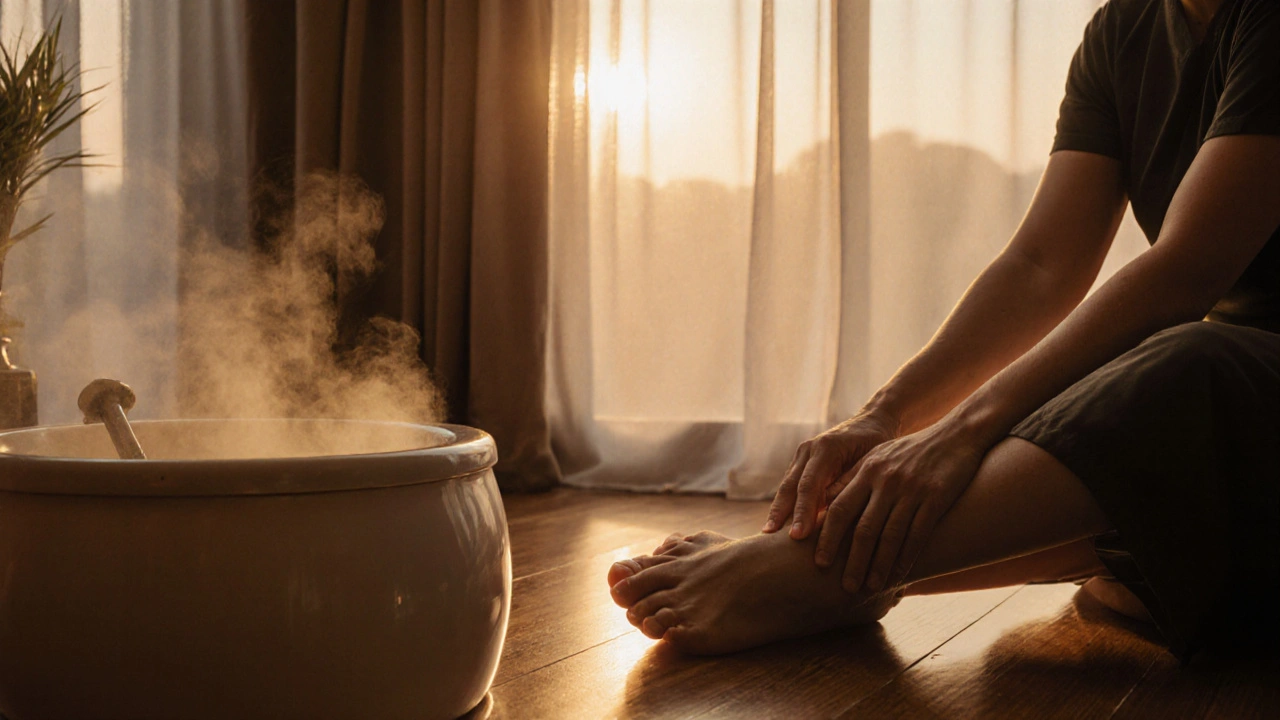
- Created by: Elara Wainwright
- Completed on: 2 Nov 2025
- Categories: Body Massage
You’ve had a long day. Your shoulders are tight, your feet ache, and your mind won’t shut off. You book a body massage expecting relief-and you get it. But what if you could get more than just muscle relaxation? What if the secret to deeper calm isn’t just in the pressure of the therapist’s hands, but in the points beneath your feet?
Reflexology isn’t just another add-on. It’s a targeted system that can turn a good massage into a transformative one. And if you’ve ever wondered why some people leave their body massage feeling like they’ve reset their entire nervous system-reflexology might be why.
What Exactly Is Reflexology?
Reflexology is the practice of applying pressure to specific points on the feet, hands, or ears that correspond to organs and systems in the body. It’s based on the idea that these zones are mapped like a miniaturized version of your entire body. Press a spot on the ball of your foot, and you’re stimulating your lungs. Squeeze the arch, and you’re working on your spine. It’s not magic-it’s a centuries-old system refined by modern practitioners.
Unlike massage, which works on muscles and soft tissue, reflexology targets nerve endings. These nerve pathways connect directly to your brain and internal organs. When pressure is applied correctly, it sends signals that help reduce stress, improve circulation, and encourage your body’s natural healing response.
It’s not a replacement for massage-it’s a powerful companion. Think of it this way: massage loosens the knots in your back. Reflexology tells your body, “It’s safe to relax now.” Together, they work like a duo: one clears the physical tension, the other calms the nervous system.
Why Reflexology Makes Body Massage More Effective
Here’s the truth: most body massages focus on the surface. Muscles, tendons, fascia-they’re all fair game. But what about the hidden triggers? The ones that keep your shoulders clenched even after a deep tissue session? That’s where reflexology steps in.
When you combine reflexology with body massage, you’re not just treating symptoms-you’re addressing root causes. For example:
- If you’re constantly stressed, your adrenal glands stay overworked. Pressing the reflex point on the center of your foot (linked to the adrenals) helps signal your body to dial back cortisol production.
- If your lower back hurts from sitting all day, the reflex point for the spine runs along the inner edge of your foot. Stimulating it can reduce referred pain and improve posture awareness.
- Headaches from tension? The reflex area for the sinuses and head is on the tips of your toes. A gentle press there during your massage can ease pressure before it even builds.
Studies from the Journal of Evidence-Based Complementary & Alternative Medicine show that patients who received reflexology alongside massage reported 30% greater reductions in pain and anxiety compared to those who got massage alone. It’s not placebo. It’s neurology.
And here’s the best part: you don’t need to be in pain to benefit. Even if you’re just looking to unwind, reflexology helps your body shift from “fight or flight” to “rest and digest” faster than massage alone.
How Reflexology Is Integrated Into a Body Massage Session
Most skilled therapists don’t treat reflexology as a separate service. They weave it in naturally.
A typical session might start with a full-body Swedish massage-long strokes, gentle kneading-to loosen the surface tension. Then, as you lie on your back, the therapist turns to your feet. They don’t just rub them. They apply precise pressure using their thumbs and fingers, holding each point for 5-10 seconds. You might feel a slight tenderness-that’s normal. It’s not supposed to hurt, but it should feel like a deep, meaningful release.
Some therapists start with the feet, others end with them. It depends on your goals. If you’re dealing with insomnia, they’ll focus on the brain and pineal gland points. If you’re recovering from a workout, they’ll target the kidneys and liver to help flush out lactic acid.
One client I spoke to-Sarah, a nurse working 12-hour shifts-said her massage used to leave her feeling “a little better.” After reflexology was added, she said: “I didn’t just relax. I felt like I’d slept for eight hours in 60 minutes.”
What to Expect During a Reflexology-Enhanced Massage
When you arrive, the therapist will ask if you’ve tried reflexology before. If you’re new, they’ll explain the zones and how it works. You’ll stay fully clothed except for your feet. No oils, no loud music-just quiet focus.
As the session begins, you’ll feel warmth spreading from your feet upward. Some people report tingling in their hands or a sudden sense of lightness in their chest. Others feel nothing at first-and that’s okay too. Reflexology works subtly. The effects often build over the next 24-48 hours.
You might feel sleepy. Or suddenly emotional. Or incredibly clear-headed. All of these are normal. Your body is releasing stored stress.
Afterward, drink water. It helps flush out toxins stirred up during the session. And don’t rush. Take five minutes to sit quietly. Let the calm settle in.
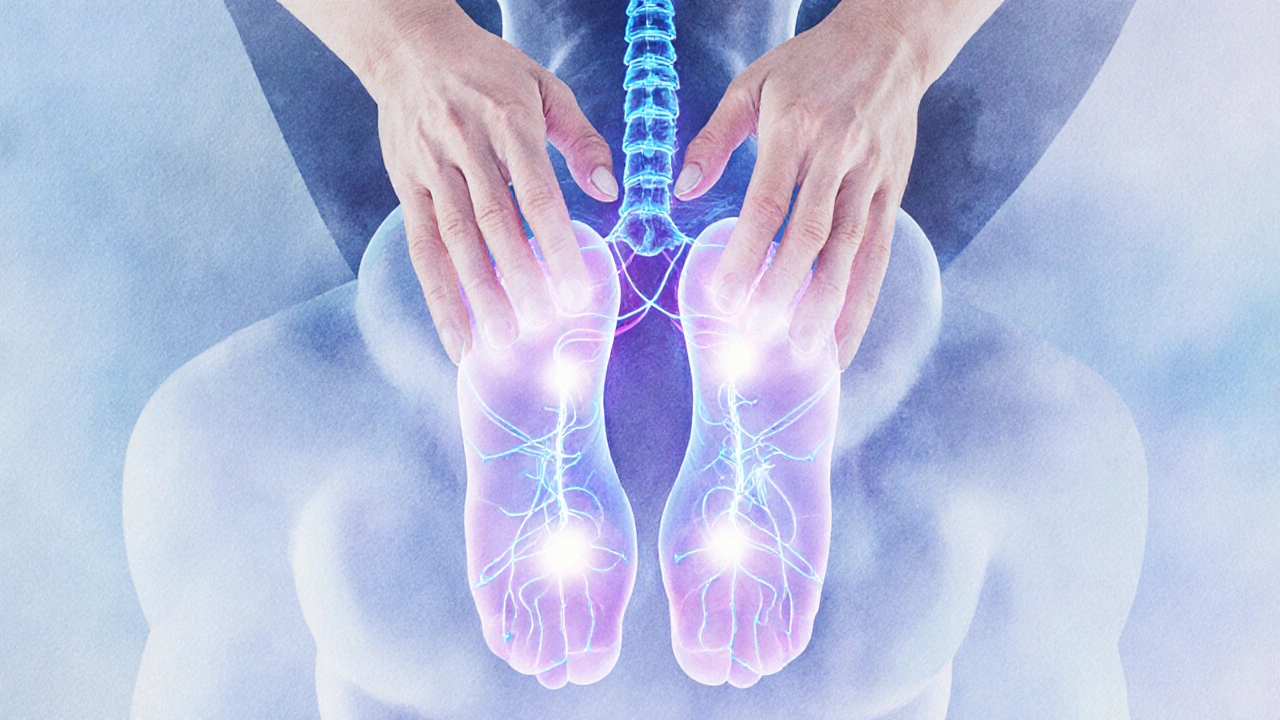
Who Benefits Most From Reflexology + Body Massage?
Not everyone needs reflexology-but certain people feel a dramatic difference:
- Chronic stress sufferers: If you’re always on edge, reflexology helps reset your nervous system.
- People with poor circulation: The pressure boosts blood flow, especially in the lower limbs.
- Those with headaches or migraines: Reflexology can reduce frequency and intensity.
- Recovering from injury or surgery: It supports healing without putting strain on healing tissues.
- Insomniacs: Stimulating the pineal gland point can improve melatonin production.
Even if you’re healthy, it’s a smart addition. Think of it like tuning your car. You don’t wait until it breaks down to change the oil. Same with your body.
Reflexology vs. Foot Massage: What’s the Difference?
People often confuse reflexology with a simple foot rub. They’re not the same.
| Aspect | Reflexology | Foot Massage |
|---|---|---|
| Goal | Stimulate internal organs and systems via nerve zones | Relieve muscle tension and improve circulation in the feet |
| Technique | Thumb and finger pressure on specific points | General kneading, rubbing, and stretching |
| Effect | Whole-body impact: stress reduction, hormonal balance, organ support | Localized relief: sore feet, tired arches |
| Duration | 15-30 minutes as part of a body massage | Can be standalone, 10-20 minutes |
| Training Required | Specialized certification in reflexology mapping | Basic massage training |
Foot massage feels good. Reflexology changes how your body functions.
Where to Find Reflexology-Enhanced Body Massage in London
London has plenty of spas and wellness centers that offer reflexology as part of their body massage packages. Look for places that list “holistic massage,” “integrative therapy,” or “reflexology included.”
Some trusted spots in central London include:
- The London Reflexology Clinic (Soho): Specializes in combined reflexology and massage. Therapists are certified by the International Institute of Reflexology.
- Spa at The Ritz (Green Park): Offers a “Harmony Massage” that includes foot reflexology as standard.
- Body Balance Holistic Centre (Battersea): Focuses on therapeutic integration. Ask for the “Full Body + Reflexology Reset.”
Don’t just book any massage. Call ahead and ask: “Do you incorporate reflexology into your body massage sessions?” If they say yes, ask how they map the points. A good therapist will know the exact zones for your specific concerns.
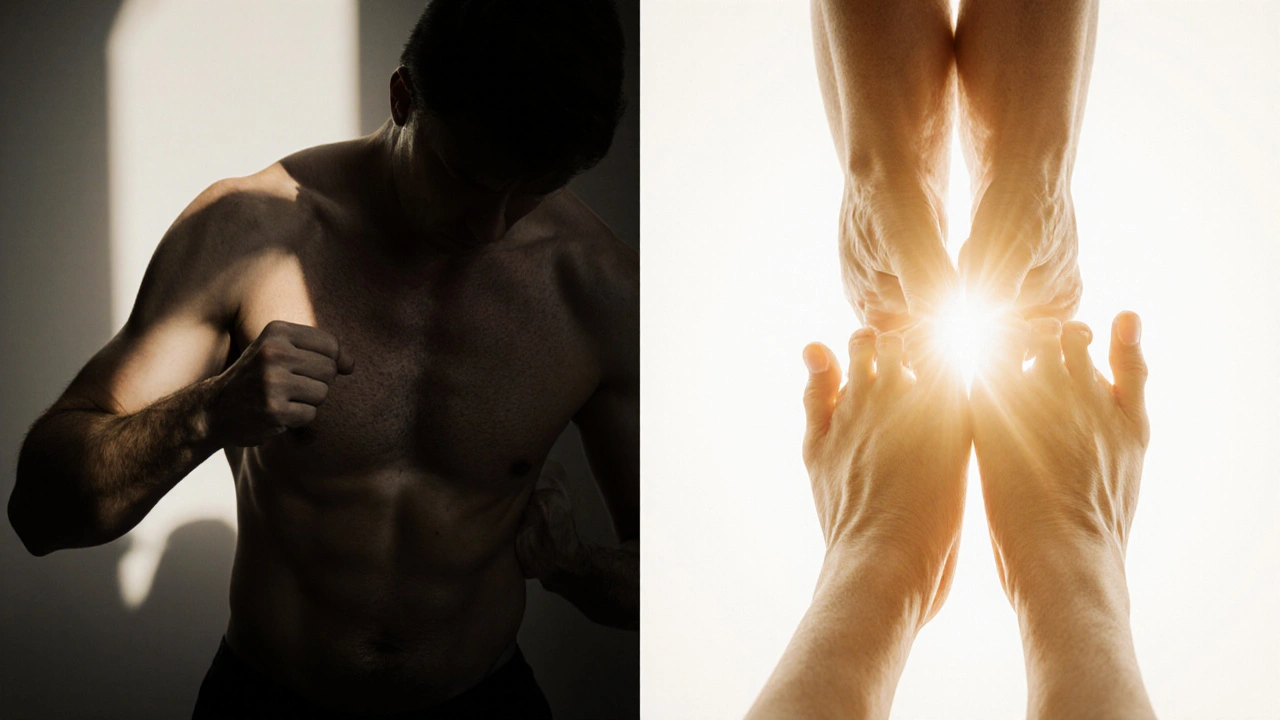
What to Avoid
Reflexology is safe for most people-but not if done wrong.
- Avoid therapists who claim reflexology can “cure” diseases. It supports wellness, not medical treatment.
- Don’t get reflexology if you have open sores, infections, or recent foot injuries.
- If you’re pregnant, let your therapist know. Some points should be avoided in early stages.
- Never force pain. Reflexology should feel deep, not sharp. If it hurts, speak up.
Frequently Asked Questions
Can reflexology help with chronic pain?
Yes, many people with chronic back pain, migraines, or arthritis find relief. Reflexology doesn’t eliminate the source of pain, but it reduces the nervous system’s sensitivity to it. A 2023 study in the Journal of Pain Research showed participants with chronic lower back pain experienced a 40% reduction in pain intensity after 8 weekly sessions combining massage and reflexology.
How often should I get reflexology with my body massage?
For general wellness, once a month is enough. If you’re under high stress, recovering from illness, or dealing with pain, once every two weeks for 4-6 weeks can make a noticeable difference. After that, you can taper back to maintenance.
Is reflexology just for the feet?
No. While feet are most common, reflexology can also be done on the hands and ears. Hand reflexology is great if you have sensitive feet or are in a wheelchair. Ear reflexology is often used for anxiety and headaches. But for body massage, foot reflexology is the standard pairing.
Does reflexology hurt?
It shouldn’t. You might feel a brief, deep pressure-like a good stretch-but it shouldn’t make you wince. If it does, the therapist is applying too much force. A skilled practitioner adjusts pressure based on your feedback. It’s about connection, not pain.
Can I do reflexology at home?
You can try gentle self-reflexology. Use your thumb to press the ball of your foot for 30 seconds to ease stress, or the inner arch for back tension. But for real results, professional sessions are better. Your hands can’t reach all the right points with the same precision-and your brain won’t fully relax if you’re doing it yourself.
Ready to Feel the Difference?
Body massage feels great. But reflexology makes it meaningful. It’s the quiet whisper beneath the pressure-the system that tells your body, “You’re safe. You can let go.”
If you’ve been getting massages for years and still feel like something’s missing, it might not be the massage. It might be the lack of reflexology.
Try it once. Let your feet lead the way. You might just find the deep, lasting calm you’ve been searching for.
Discover how deep tissue massage can be an effective tool for improving mental health. This article delves into the ways massage therapy reduces stress, anxiety, and depression, offering readers practical tips on finding qualified therapists and understanding what to expect during a session. Explore various types available in Bristol and learn about the safety measures to ensure a beneficial experience.
This guide gives you the lowdown on outcall massage—what it is, why it’s awesome, and how to book it safely. You’ll learn about the different types of massages you can get right in your living room and how much you might pay. We’ll walk through how a session actually feels, how to find the best services, and how to keep things safe and comfortable. There’s even a handy comparison table and answers to all your burning questions. Ready to bring the spa to your sofa? This article covers everything you need.


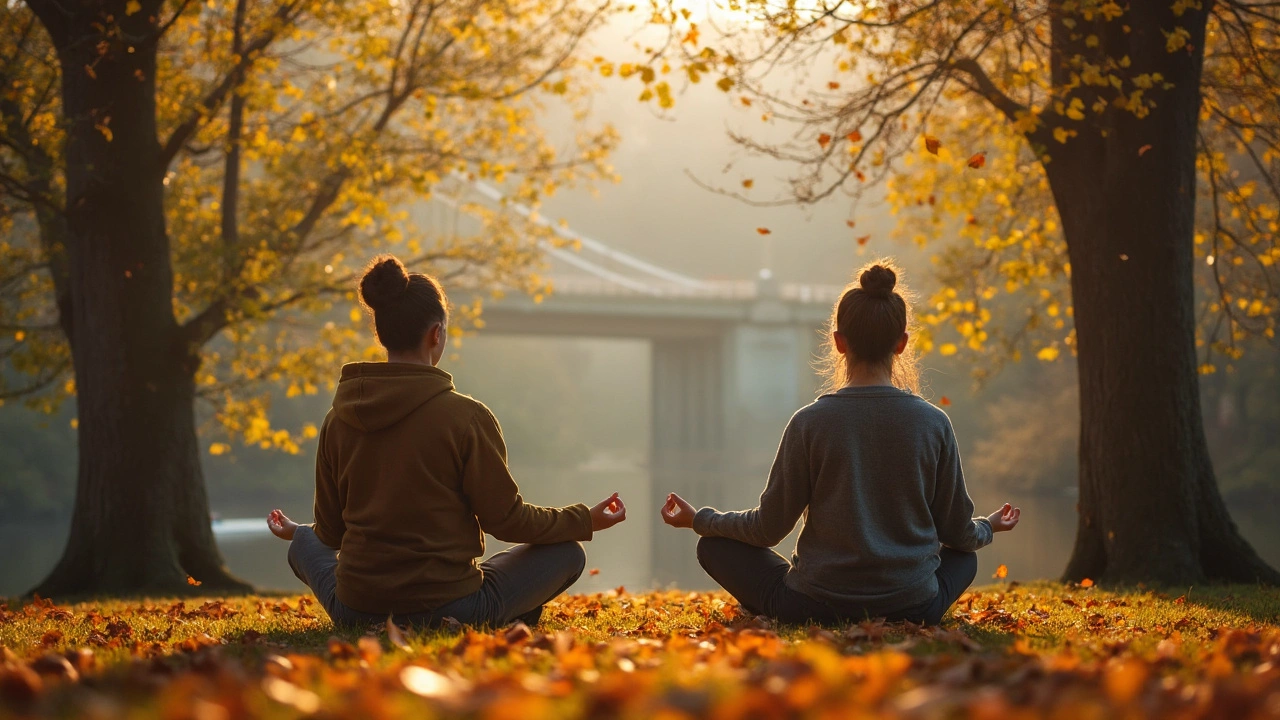
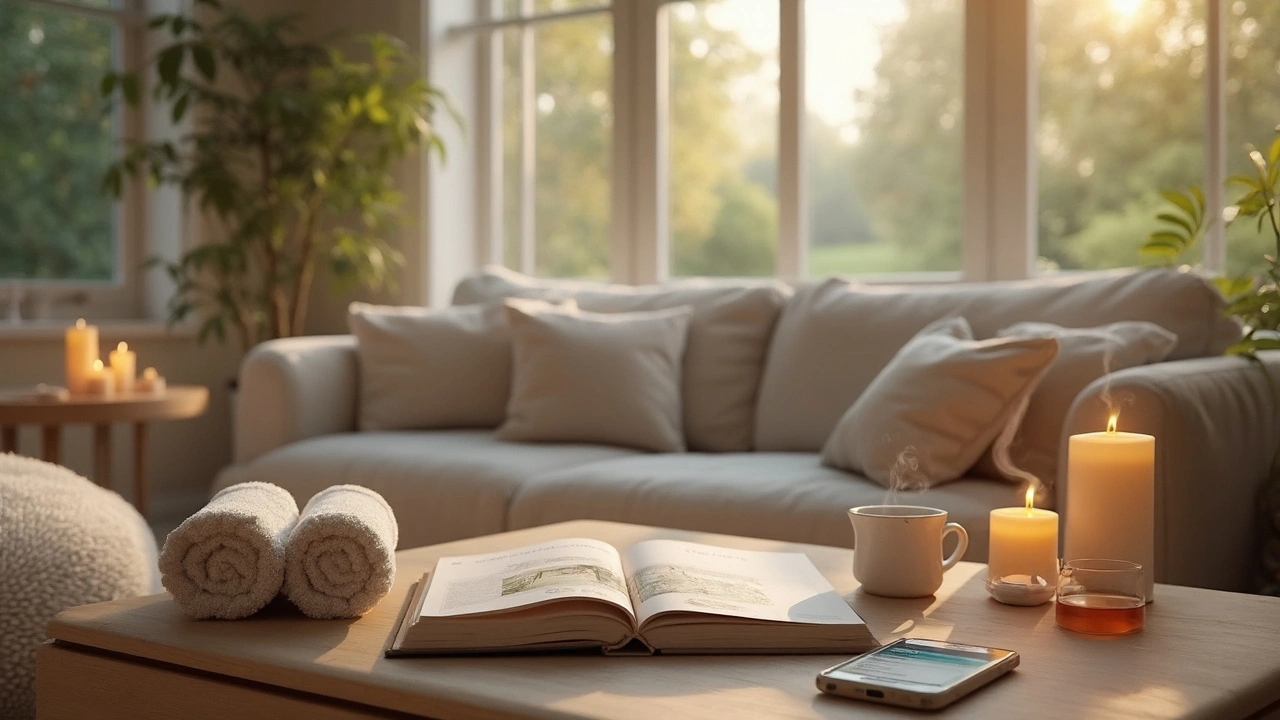
peter elnino
November 3, 2025 AT 16:43Let me guess - this is just another corporate wellness scam funded by Big Reflexology. They’ve been mapping ‘energy zones’ since the 1920s, but no peer-reviewed study has ever proven neural pathways from feet to organs exist. It’s all placebo wrapped in jargon. Your adrenal gland isn’t on your foot, it’s behind your kidneys. Stop letting therapists manipulate your gullibility with ‘nerve signaling’ nonsense. 🤖
Alix Dana
November 5, 2025 AT 03:13Okay but real talk - I tried this after months of chronic stress and honestly? My body felt like it rebooted. Not magic, but science-y magic. The way the pressure on my foot made my shoulders drop like a weight lifted? I didn’t know that was possible. Now I ask for it every time. If you’re skeptical, just try it once. No expectations. Just breathe. You might be surprised. 😌
rachel newby
November 6, 2025 AT 09:51Ugh. Another ‘holistic’ article pretending to be science. The ‘Journal of Evidence-Based Complementary & Alternative Medicine’? That’s a dumpster fire of pseudoscience. And ‘neurology’? Please. They’re just massaging feet and calling it a nervous system reset. I’ve had better relaxation from a nap on a subway bench. 🙄
Tina Nielsen
November 7, 2025 AT 16:21so i tried this last week and like… my feet tingled and then my chest just… opened up? idk man. its weird but good. i cried a little. not sad crying. like… release crying. the therapist didnt say much just pressed and i just… melted. i think my body was holding onto so much. 🌿
Brian Opitz
November 8, 2025 AT 23:57Frances Chen
November 9, 2025 AT 02:08I think people get too hung up on whether it’s ‘real science’ or not. What matters is what happens in the body. If pressing a spot on your foot makes you breathe deeper and your jaw unclench - that’s real. Doesn’t matter if it’s nerves or energy or vibes. Your nervous system responded. That’s the point. I’ve seen people with PTSD melt in these sessions. You can’t measure that with a lab test. But you can feel it.
Dian Edgar
November 9, 2025 AT 07:34my buddy swears by this after his back surgery. said the massage alone didnt help but when they added the foot stuff? he slept for 8 hours straight for the first time in months. i was skeptical too but now i always ask for it. not because i believe in magic zones but because… it just works. kinda like how acupuncture works even if we dont totally get why. 🤷♂️
jocelyn richards
November 9, 2025 AT 22:38OMG I KNEW IT. I told my therapist last month she was doing it wrong and she said ‘oh you’ve had reflexology before?’ I was like YES I’VE BEEN DOING IT ON MYSELF FOR YEARS WITH A TENNIS BALL. I PRESS THE BALL OF MY FOOT FOR 3 MINUTES WHEN I’M ANGRY. IT WORKS. I’M A GENIUS. MY FRIENDS THINK I’M CRAZY BUT I KNOW THE TRUTH. 🙌
Nakia Decosta
November 10, 2025 AT 08:05Reflexology is not a replacement for medical treatment. It is a complementary practice that may support relaxation. The foot zones are not anatomically accurate. But if it helps you unwind, then do it. Just don’t pretend it’s medicine. I’ve seen too many people skip real care because they think thumb pressure on the arch fixes their thyroid. It doesn’t. But it might help them sleep. So. Fine. Do it. Just keep it honest.